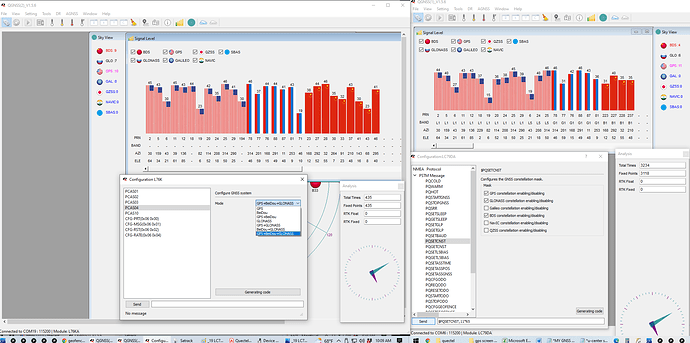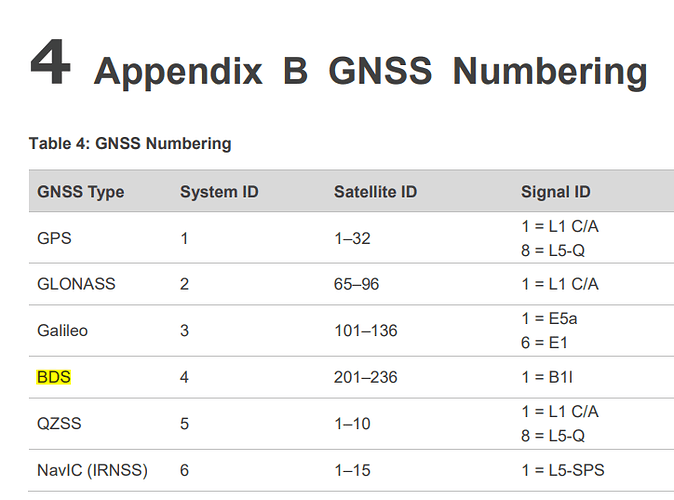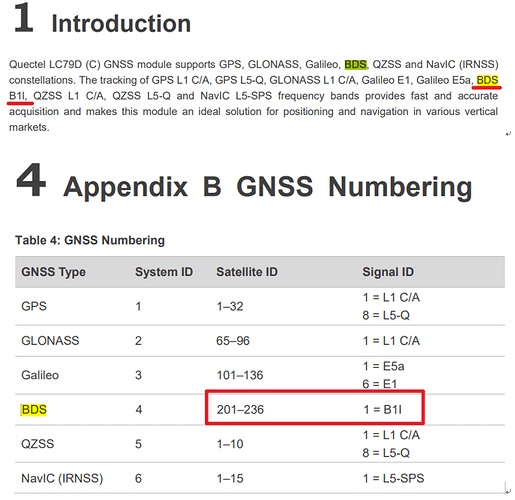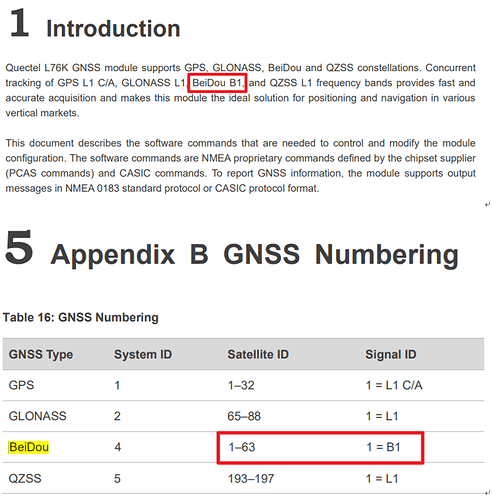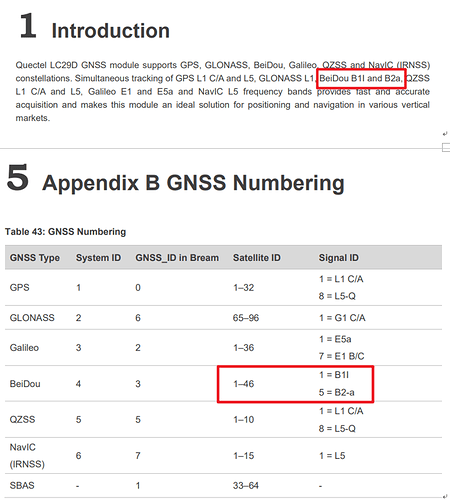I just received a new LC79DAMD EVK kit and have been comparing it to my L76KB. The 79 is tracking 21 SV’s whereas the 76 tracks 26 SV’s. I’m using the supplied L1/L5 antenna on the 79 and a small ceramic antenna on the 76. Both are a few inches apart with VERY good visibility to most of the sky. I selected the same constellations on both devices which can be seen on the screen shot.
The left of the screen shot is the 76 and the right is the 79. The 79 is seeing both L1 & L5 bands. I’m a bit surprised, only GPS has dual-band reception. On my Allystar TAU1201 Isee B1I/B2A and Galileo E1/E5A bands. Should I see these dual bands on the 79DA? Let me know if you need more info.
Hi Captain-norm,
LC79DA supports BDS B1l band by default.
Quote from Quectel_LC79D(A)_GNSS_Protocol_Specification.pdf
Thanks for the chart of PRN’s. You’re right, the PRN’s I tracked were in the range of 201-236, so are B1I.
On my Allystar TAU1201 I see B1I/B2A Signal ID’s. The weird thing, if I connect the 1201 chip to qgnss v1.5.7, I see PRN’s 32, 23, 37, 20, 30… in the range of 25-37. On the LC79DA I see numbers in the 201+ range. If I compare azimuth and elevation, I see the 79DA added 200 to the numbers. I’m pretty new to this and am so confused why different manufacturers don’t use the same range of PRN’s.
Also, on my similar dual-band 1201 chip, I see 16 BDS sv’s, some B1I, some B2A. At the same time on the 79DA, I see 7 sv’s, all B1I.
I just looked at the specs of the 79DA, it says BDS only supports BeiDou B1: 1561.098MHz. So, it doesn’t handle dual bands on BDS (like the TAU1201 does). Looks like I need to dig deeper in my research in the future.
I would appreciate it if you replied with more info on the range of PRN’s in BDS with different manufacturers.
Hi Captain-norm
It is true that different manufactures use different range of PRN’s. You can get which frequency bands are supported form doc GNSS_Protocol_Specification , the paragraph Introduction( keywords BDS or BeiDou ). Different manufactures also naming BDS bands differently. However, the constellation of BDS have 2 bands, which contain L1( named B1L ) and L5(named B2A). For example, L76K supports BeiDou B1 with PRN’s range 1-63, and LC79D supports B1l with PRN’s range 201-236. Actually, both of them indicates BDS L1 band.
LC79D is a multi-band module, for GPS. But for BDS, both LC79D and L76K( it is single band ) are single band.
Another example, LC29D is a multi-band module which supports both BeiDou B1L and B2A.
LC79D GNSS Protocol Specification
L76K GNSS Protocol Specification
LC29D GNSS Protocol Specification
